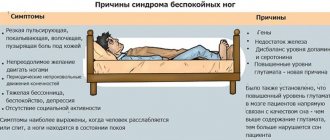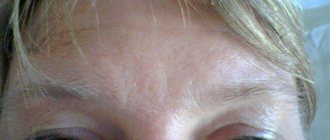Rett syndrome , what is it in children, is one of the possible types of severe degenerative diseases that affect the nervous system and provoke a stop in its development during an early age period.
In accordance with average statistical data, such a disease first makes itself felt after six months of age.
The disease is characterized by impaired motor skills and signs of autistic behavior. After reading the information below, you will learn about the characteristics of the manifestation of the pathology and the causes of its occurrence, as well as treatment methods and possible prognosis.
What is Rett Syndrome?
Rett syndrome is a hereditary disease of neuropsychiatric origin. It develops mainly in girls and leads to the development of mental retardation.
This syndrome was first described by a neurologist from Austria, Andreas Rett.
The peculiarities of the pathology are that a child develops well up to 18 months, but then the child’s early acquired skills begin to disappear: speech, motor activity, and object-based role play are impaired.
Monotonous hand movements appear, not pursuing any goal. Often the child rubs and wrings them.
Andreas Rhett examined two girls in whom he noted a regressive type of psychoneurological disorder, manifested by hand movements reminiscent of washing.
Diagnostics
If the development of this disease is suspected, the child is sent for a hardware examination. As a rule, it involves performing the following procedures:
- Study of the state of the brain using computed tomography.
- Ultrasound diagnostics.
- Measuring bioelectrical activity of the brain using EEG.
This is a genetic disease consisting of four stages, requiring rehabilitation and daily work with a specialist
The main difficulty in diagnosing Rett syndrome is that this disease is often confused with autism. However, there are a number of differences that make it possible to accurately differentiate these two pathologies. For example, characteristic signs of autism appear within the first months of a child’s life. Rett syndrome develops somewhat later.
A child with Rett syndrome is constrained in movement due to the presence of muscle disorders, while an autistic child often resorts to manipulating various objects. In addition, the first disease is characterized by slower head growth, convulsive seizures, and difficulty breathing.
Diagnostic methods
The main criterion for diagnosis is collecting anamnesis and clarifying the entire clinical picture. But they also identify a separate group of necessary diagnostic criteria:
- adequate pregnancy;
- head circumference at birth within the normal range, and then growth retardation from five months to four years;
- deterioration of movements and loss of skills from six months;
- little talkativeness;
- unfocused movements of the arms and hands, clapping, twitching, “hand washing”;
- apraxia and ataxia.
There is an additional group:
- apnea followed by hyperventilation;
- salivation and aerophagia;
- cramps and muscle atrophy;
- growth retardation and scoliosis.
There is also a group of exclusion criteria:
- organ enlargement;
- eye damage: optic nerve atrophy and retinopathy;
- urological disorders;
- microcephaly.
Electroencephalography is a diagnostic method. It shows a slow rhythm and epileptiform discharges.
CT and MRI are not informational methods for Rett syndrome. Positron emission computed tomography shows a decrease in overall blood flow in the brain.
Causes of the syndrome
The causes continue to be studied. A special role is played by genetic predisposition, as well as mutations in the genome associated with the X chromosome.
Mutation in the gene encoding methyl-CpG-binding glycoprotein. leads to disruption of the proper development of brain activity in the embryonic period of development.
If the gene is not changed, then the brain and its parts develop without pathology. If a mutation occurs, the X chromosome is damaged. Since women have two of them, one X chromosome is normal, and the second is defective.
Girls are born with one normal X chromosome. Since boys have a set of chromosomes consisting of X and Y chromosomes, it is theoretically impossible for them to be born with Rett syndrome. They die in the prenatal period. But there are exceptions.
With polysomy XXY chromosomes, the birth of boys is possible (Klinefelter syndrome).
Diagnosis
Rett syndrome requires a whole range of diagnostic measures. First of all, the pediatric neurologist should:
- review the patient’s medical history to identify concomitant pathologies that may aggravate the course of the disease;
- collect and analyze life history, including studying information about the intrauterine development of the fetus and the course of pregnancy in women;
- conduct a thorough neurological examination - this should include assessment of motor and speech skills, gait and motor skills.
In addition, head circumference measurement is required; interview the patient’s parents in detail to establish the severity of symptoms, which will indicate the phase and nature of the course of the disease.
The most informative instrumental examinations are:
- MRI of the brain;
- electroencephalogram;
- Ultrasound of internal organs.
- The most accurate diagnostic information is provided by the methods of modern genetics, which makes it possible to make the correct diagnosis in the prenatal period, i.e. during the intrauterine development of the fetus.
Why are some cases more serious than others?
The evolution and severity of Rett syndrome varies from person to person. Some girls have the disorder at birth (before or during birth), while others may have late regression or milder symptoms.
Because girls have two copies of the X chromosome and only need one working copy to generate genetic information, they turn off the extra X chromosome in a process called X deactivation. This process occurs randomly so that each cell has an active X chromosome.
The severity of Rett syndrome in girls depends on the percentage of cells that have a normal copy of the MECP2 gene after X chromosome deactivation: if X chromosome deactivation inhibits the X chromosome that carries the defective gene.
In large numbers of cells, symptoms tend to be milder, but if a larger percentage of cells are disconnected from the healthy X chromosome, the onset of the disorder occurs earlier and symptoms are more severe.
Etiology
A similar neuropsychiatric disease was first described by neurologist Andreas Rhett, but it was identified as an independent illness by another scientist, B. Hagberg.
Today, this disease is considered quite common, since it is diagnosed in 1 child in approximately 10 thousand newborns. Clinicians note that in the vast majority of situations, pathology is found in girls, and is quite rare in boys.
This is due to the fact that the disease is inherited in a dominant manner associated with the X chromosome. In boys, given the absence of such a segment, genetic mutations leading to the formation of such a syndrome are almost always fatal.
However, there are several atypical variants of the course of Rett syndrome in children, characterized by a less striking clinical picture and affecting males. It is worth noting that in boys the disease often develops against the background of another disease, namely Klinefelter syndrome - in such situations an additional X chromosome is observed.
Some neurologists believe that this disease can be caused by:
- Luba syndrome;
- congenital encephalopathy.
However, it is generally accepted that such conditions are atypical variants of the course of Rett syndrome.
It is also worth considering that inadequate management of pregnancy significantly increases the likelihood of pathology developing. This should include the expectant mother’s addiction to bad habits, in particular drinking alcohol.
Symptoms of Rett syndrome
Sick girl with Rett syndrome
After birth, the child is no different from his peers during the first months of his life.
Doctors cannot suspect symptoms and identify pathological changes characteristic of Rett syndrome.
The head circumference is normal.
The only sign of pathology may be a decrease and lethargy of muscle tone. Body temperature (low, 35 degrees), pale skin and high humidity of the palms may also change.
By 5-6 months, a lag in the child’s physical development begins to emerge. He does not crawl, cannot roll over onto his back or side.
In most cases, at an older age, the child cannot hold his body upright and sit.
Pathogonic (distinctive) signs of Rett syndrome:
- specific motor techniques of the hands (see photo above). Children with this syndrome cannot hold various objects in their hands. They exhibit the same stereotypical movements, reminiscent of fingering or clapping hands at chest level. Children sometimes hit themselves on various parts of their bodies with their hands.
- development of mental retardation, lack of desire to learn something new. Children under 1 year of age can learn to walk, talk, and recognize others (parents), but over a certain period of time they lose these abilities.
- reduction in brain size and head circumference.
- development of convulsive seizures resembling epileptic ones.
- curvature of the spine due to disruption of the spinal segment leading to muscular dystonia;
- speech disorder;
- slow growth;
- development of pathologies of the cardiovascular system, digestive tract, etc.;
- breathing problems; periods of lack of breathing may occur at night or during the day during sleep;
- When eating food, children may swallow air, causing regurgitation.
Complications and consequences
The main complication in patients with Rett syndrome is neuromotor and orthopedic impairment, deterioration of movements, inability to self-care and movement. Patients lose the ability to move purposefully and perform any actions.
The appearance of scoliosis can cause pain in the back and lower back, and in this case massage should be included in the treatment.
In the first stages, gait deteriorates and subsequently the patient completely stops walking and is confined to a wheelchair. One of the most dangerous complications is epileptic seizures, which are only becoming more frequent and longer in duration.
Rehabilitation of a sick child: what to do with your baby to improve his condition
In addition to drug therapy, rehabilitation measures are very important. The main goal of such activities with a child is to improve his quality of life. This task can only be accomplished through close cooperation between parents and specialists.
Physical education and massage
Therapeutic exercise and massage are the best ways to correct movement disorders. The exercises are aimed at supporting the range of motion in the limbs, the ability to preserve walking skills as much as possible, and strengthening the muscle corset to prevent spinal curvature. In some cases, orthopedic correction is used, including surgery, if the child has severe bone deformities.
Video - rehabilitation measures, physical therapy
Treatment by an osteopath, psychologist and defectologist, music therapy (Tomatis method)
Treatment by an osteopath, in particular manual therapy, in combination with other rehabilitation methods can have a good effect.
Classes with a psychologist and speech pathologist are required. Psychological rehabilitation is aimed at maximizing the development of the remnants of communication and motor skills, and at the formation of a specific “language of communication” based on them.
To rehabilitate a child with Rett syndrome, sessions with a psychologist are required.
Music therapy is very widely used, which calms patients and partially compensates for impaired interaction with the outside world.
Music serves as a motivator for communication between patients and people around them, and develops sensory, emotional, and cognitive skills.
The Tomatis method is used, which consists of listening to classical music processed with special filters. The method improves the brain's ability to perceive and correctly process sound information. The filters of the special device used to conduct classes are configured individually for each child. Tomatis therapy is contraindicated in case of epileptic activity.
Video: rehabilitation of a child with Rett syndrome at home
Other techniques are also used to correct the symptoms of the disease:
- ABA therapy is a training program based on the study of behavioral factors and intensive influence on the behavior of a sick child. The essence of therapy is that all complex actions and skills are broken down into small blocks. Each such block is separately memorized with the child until it becomes automatic, and then all actions are assembled into a single complex chain. At the same time, the ABA therapist strictly controls the patient, not allowing him to deviate from the assigned activity;
- Lessons with specially trained animals—horses (hypotherapy), dogs (canistherapy) and dolphins (dolphin therapy)—have a good effect. An individual lesson program is drawn up for each child;
- hydrorehabilitation includes hydromassage and swimming, as well as special exercises in the aquatic environment;
- art therapy is treatment through drawing and creativity. This therapy helps improve communication skills, reduce emotional behavior, normalize mental state, and regulate fine motor skills.
Hypotherapy is one of the effective methods of rehabilitation of a child with Rett syndrome
Despite the difficulties in interacting with a sick baby, parents should strive to involve him in society and help establish communication links with the outside world.
Nutritional Features
Feeding a sick child presents certain difficulties. Many girls experience increased salivation and poor oral health, so feeding them is a real problem. Some children have a good appetite and enjoy eating their favorite foods. But they all eat very slowly; the process of eating can last up to an hour and a half. As for drinking, almost half of sick babies have difficulties with swallowing, which are manifested by choking, coughing and can threaten liquid getting into the respiratory tract.
Children with Rett syndrome have difficulty chewing food containing coarse fiber (meat, raw vegetables, fruits), so it must be crushed and given as a puree. It is better to offer side dishes in small pieces or mashed. During feeding, you need to make sure that the baby's head is at the correct angle and does not fall back.
It is better to give food containing coarse fibers to a sick child in a ground form.
Many children suffer from nausea and often refuse to eat, so it can be very difficult to feed them; such babies quickly lose weight. Therefore, food should be enriched with proteins and fats, sufficiently high in calories and fortified. It is recommended to feed the child in small portions and often (every 3 hours) so as not to overload the digestive system. Young children are given fortified milk or formula.
In some cases, when the process of absorbing food becomes too problematic and painful, it makes sense to feed the child through a tube with special nutritional mixtures. This option can significantly improve the baby’s quality of life and can become a real salvation for him.
Stages of the disease
There are 4 stages of the disease:
- The first stage develops at the beginning of the fourth month of life and can last up to two years. Deviations in the child’s physical development appear, lack of interest in what is happening, apathy, delayed head growth, weight gain, low muscle tone and lethargy.
- The second stage develops by the year of life, when the child crawls, rolls over, walks, and speaks. Within a year, these acquired skills disappear. He doesn't remember how to talk, walk, etc. The child develops stereotypical hand movements reminiscent of washing under the tap, breathing problems during rest and more, and loss of coordination of movements. A convulsive syndrome resembling an epileptic seizure also occurs. Treatment of an epileptic seizure does not lead to the disappearance of seizures.
- The third stage is most often observed at the end of the second and beginning of the third year. This stage is also called stabilization. At this stage, brain development regresses, that is, mental retardation develops, and the number of epileptimorphic seizures decreases. The child can be in one position for a long time (being “in himself”), but there is no anxiety or screaming.
- The fourth stage is the most severe, develops at approximately 5-10 years of age and is characterized by irreversible degenerative processes in the central and peripheral nervous systems, as well as in the joints and spinal column. A curvature of the spine develops, leading to 3-4 degrees of scoliosis. Characterized by cachexia (decreased child weight), muscle hypotonia, reduction in brain size, pain in joints and muscles. Epileptic seizures occur very rarely.
The course of the disease is based on early diagnosis. The earlier the diagnosis was made, therapeutic and preventive measures were carried out, the more favorable the course of the disease. The course of pathology occurs differently in different children. If the diagnosis was made late, there is a high risk of developing severe complications that interfere with the normal life of the sick child.
Symptoms
The first symptoms appear from 6 months, but the most pronounced changes occur between 12 and 18 months:
- Slow skull growth . This is the first sign of Rett syndrome. As we get older, the slowing of growth in other parts of the body becomes more noticeable;
- Loss of hand coordination . The child stops using his hands to point or grasp objects. Stereotyped hand movements develop - striking, stroking, tapping, etc.;
- Speech impairment . The patient stops talking. Lost interest in people, toys and the environment;
- Seizures . They occur in 50-90% and lead to muscle spasms, which can lead to epileptic seizures;
- Lack of coordination and balance. Loss of ability to crawl or walk;
- Breathing problems - apnea, hyperventilation, swallowing air (aerophagia);
- Irritability . Periods of crying or screaming last for hours;
- Scoliosis or severe curvature of the spine ;
- Arrhythmia or irregular heartbeat;
- Constipation;
- Vasomotor disorders . The limbs may take on a purple or pale tint;
- Strange facial expressions, prolonged laughter, screaming for no apparent reason .
Degree of progression of deviation
There are four stages of Rett syndrome, each of which appears exclusively in infancy.
Despite the fact that the disease is dangerous, women affected by it live to an average of 40 years.
Complete relief from the disease is possible
, but we will describe this in detail below.
Based on the main four stages, a “home” diagnosis can be carried out, which will allow you to determine whether you should worry or whether there is no reason to worry:
- The first stage is stagnation. There are no obvious symptoms, but gradually, over the course of about one year, the baby loses interest in toys, cartoons, friends and his other hobbies. The growth of the head and limbs slows down slightly, and muscle hypotension is observed, against the background of which the body temperature may decrease.
- The second stage, in which speech skills that the child may have learned earlier are transformed into limb manipulation. Movements become uncoordinated, convulsions and seizures may occur, from which it is not possible to get rid of them. The functioning of the lungs is also disrupted - the baby experiences shortness of breath, or periodically suffocates for unknown reasons.
- The characteristics of the third stage make it clear that this is a “lull”. The seizures and convulsions stop and are replaced by lethargy. Mental development also stops, the child does not speak. In addition, weight gain at this stage of the disease is minimal.
- The final stage is the cessation of development of the organism. The type of appearance and mental abilities that the patient develops is assigned to him for life. As a rule, this is the inability to move independently, scoliosis, a small head, and unnaturally short limbs.
Treatment
Treatment of Rett syndrome is based on symptomatic treatment.
It is impossible to eliminate the cause of the development of the disease and its further progression, but it is possible to slow it down.
Treatment of Rett syndrome includes: drug therapy, preventive and therapeutic exercise.
- For therapeutic purposes, anticonvulsants (Difenin, Diazepam, Clonazepam, Carbamazepine) are used to relieve epileptimorphic seizures.
- Melatonin is used to regulate biological rhythms (day/night).
Prevention
Physical therapy is one of the optimal ways to correct movement disorders. It includes exercises aimed at maintaining flexibility and range of motion of the limbs, as well as maintaining walking skills for as long as possible.
Psychological programs are proposed for the maximum development of remaining intact motor skills and the formation of a “language of communication” on their basis. Music therapy is also used, as it has a beneficial calming effect on children and partially compensates for impaired contact with the outside world. Research into Rett syndrome is intensive throughout the world, and it is probably only a matter of time before a specific biological marker is discovered.
When this happens, there will be new prospects for treating pathology or alleviating the condition of patients, as well as the possibility of prenatal screening and prevention of this serious disease.
Life forecast
How long do children with Rett syndrome live?
The life expectancy of such children with timely diagnosis and proper drug and preventive therapy is quite high. Girls live to be 30-40 years old. Boys, unfortunately, at best, are up to 1-2 years old.
Children die in stage 4, with the development of severe complications: cerebral edema, heart failure, intestinal necrosis, pathology of the digestive tract, dysfunctional pathologies of brain structures.
Characteristics of the disease
Modern science knows quite little about Rett syndrome, since for quite a long time it was considered an ordinary dementia and was not studied as something separate. For the first time, the idea that some signs unusual for classical dementia make it possible to distinguish a special disease came to the mind of the Austrian pediatrician Andreas Rett in 1954.
Serious research in this industry began only at the turn of the millennium, which does not allow specialists to have a sufficient amount of necessary knowledge.
Rett syndrome is now described as a genetically determined progressive deterioration of the central nervous system, which affects the growth and function of the brain and musculoskeletal system. Children with this syndrome are unteachable; they cannot even move independently.
Due to the short duration of studying the disease, no one can say exactly how many years such children live, but scientists have come to the conclusion that boys, suffering from this diagnosis thousands of times less often than girls, do not survive if they have it.
Clear signs of the disease are noticeable at the earliest stages of life - infants already show some symptoms, which worsen over time, and by the age of four all development of the body completely stops.
At the present time, the disease is considered incurable, but it is possible to alleviate the child’s suffering, and in the meantime, scientists from all over the world continue to try to find effective ways to defeat Rett syndrome.
Expectations and forecasts
Constant support of the child through medications, sports and games allows you to “quench” the illness. Symptoms will subside significantly
, the baby will begin to communicate a little, develop, and perhaps the gift of speech and motor skills will return to him. Complete relief from the syndrome is possible only in rare cases. In general, as we said above, sick girls reach the age of 40 years.
Note!
Death at an early age is indeed possible, but not from the pathology itself.
Cause of death
may cause convulsions, breathing or heart problems, or seizures.
Classification
The only division of such a disease in children suggests the presence of several stages of progression, depending on which the clinical picture will differ:
- Stage 1 - begins from the moment the child reaches 4 months until 2 years of age. In such cases, the first signs of the disease begin to be weakly expressed, which is why it is very important for parents to monitor the baby’s behavior. Treatment started at this stage can stop the progression of Rett syndrome;
- Stage 2 is characterized by progression, and clinicians diagnose it as encephalitis. Can manifest in the age category from 1 year to 3 years;
- Stage 3 - covers the entire preschool period and early school age. It is characterized by a stable course and possible improvement in the child’s condition;
- Stage 4 - appears at about 10 years of age. It is expressed in immobilization of children and the formation of secondary bone deformations.
Diagnosis of Rett syndrome is made on the basis of studying the patient's medical history, his current status, magnetic resonance imaging and encephalography, and molecular genetic tests. The study of hereditary history, as a rule, does not make much sense due to the sporadic nature of MECP2 gene mutations. Characteristics of Rett syndrome are the normal development of a child up to 6-12 months, the occurrence of muscle hypotonia and anxiety in early childhood, the subsequent appearance of ataxia and frequent epileptic seizures, and the rapid loss of acquired skills. Subsequently, patients experience severe mental retardation, muscle weakness (up to atrophy), curvature of the spine, and convulsive seizures.
When examining patients with Rett syndrome, growth retardation and growth arrest, a sharp decrease in head circumference, and lack of speech are revealed (echolalia is characteristic in the initial stages of the pathology). Magnetic resonance imaging of the brain reveals a decrease in the size of the organ, unclear differentiation of gray and white matter, the basal ganglia, and a decrease in the folding of the cerebral cortex. An electroencephalogram confirms a decrease in background brain activity and a sharply weakened response to external stimuli. The most accurate diagnostic information is provided by modern genetics methods - searching for deletions in the MECP2 gene locus or direct sequencing of its sequence to determine mutations. Such confirmation of Rett syndrome is also possible within the framework of prenatal diagnosis of genetic diseases. Examination of internal organs (for example, ultrasound) can play an auxiliary role in establishing this condition - in 20-30% of patients, underdevelopment of the liver or spleen is detected.
There is currently no specific treatment for Rett syndrome. There is encouraging data from some research laboratories, whose employees were able to “turn on” the MECP2 gene in mice and thereby achieve the disappearance of the symptoms of the disease. In the field of practical medicine, only symptomatic therapy is currently available, however, it is also associated with a number of difficulties - in particular, epileptic seizures in this disease are difficult to eliminate with anticonvulsants. Nootropic drugs are also used to treat Rett syndrome; sleep disturbances are corrected with sleeping pills from the barbiturate group or melatonin.
Forecast and prevention of Rett syndrome
The prognosis of Rett syndrome is unfavorable, since this disease steadily leads to severe mental retardation, as well as to a number of motor and neurological disorders. Patients with this pathology, with appropriate care and symptomatic treatment, can live up to 40-50 years, but their risk of sudden death is quite high. The prognosis of Rett syndrome significantly worsens and the life expectancy of patients is reduced by the presence of malformations of internal organs, which occurs in approximately a third of cases. The main cause of death is respiratory or multiple organ failure and sudden death; in adult patients there is also a high risk of stroke. Prevention of Rett syndrome is possible only in the form of prenatal diagnosis of this disease using genetic methods. If a boy has a defective form of the MECP2 gene, disruption of the formation of the brain and internal organs can be noticed during preventive ultrasound examinations during pregnancy.
Rett syndrome - this diagnosis is given to some children in one case out of 10 thousand, mainly girls. Presumably this disease is of genetic origin and almost does not manifest itself in a child up to six months of age. The future life of such children is fraught with many problems. “Popular about health” will try to clarify what it is - Rett syndrome, what its manifestations are, and how long children with this pathology live. Rett syndrome - a brief description Rett syndrome is a degenerative genetic developmental disorder that affects the child's brain. Scientists explain that the origin of this disease is inextricably linked with a mutation of the X chromosome genes. The pathogenesis of the disease causes a lot of controversy, while Rett syndrome is not yet fully understood. The mutating gene is contained on the X chromosome, so a male child has almost no chance of survival, since he has only one X chromosome, and it is damaged. Most boys with Rett syndrome die in the womb. Girls have a chance to survive due to the presence of two X chromosomes, one of which is healthy, and the other contains a mutating gene. What are the manifestations of Rett syndrome? Symptoms, stages of the disease Genetic pathology is difficult to identify at the birth of a child, since outwardly newborns do not have any abnormalities. They develop normally up to 4-5 months, all the baby’s indicators - weight, height, head circumference are no different from the norms of healthy children. For the first time, deviations become obvious at 4.4-6 months, and sometimes later. During this period, there may be a slight lag in the baby’s development, the neurologist detects weak muscle tone, and the pediatrician notes a delay in the growth of the head, feet and limbs. Later, other symptoms of the disease appear: • Sweaty palms. • Hypotension. • Reduced body temperature. • Paleness of the skin. But even at this stage the symptoms cannot be interpreted with accuracy. The further development of the baby may already suggest the presence of deviations. Some children with Rett syndrome can develop within normal limits up to a year, they begin to crawl, walk, and talk. But then changes occur that are difficult to ignore. Symptoms of genetic pathology are as follows: • Growth slows down. • The palms and feet almost stop growing and often atrophy. • Hair loss is observed. • Muscle tone is decreased or increased. • Movements are constrained, coordination is impaired. • The child’s gait changes, the baby has difficulty moving. • Digestive disorders are observed. • The spine is bent. • Speech skills are lost, the child repeats meaningless phrases. • There are frequent hand movements – twitching, rubbing, fingering. • Heart rhythm is disturbed. • Breathing problems are obvious.
Stages of the disease Doctors divide the development of the disease into 4 stages, each of which is characterized by certain changes in the behavior and well-being of patients. 1. At the first stage (from 5 months to a year or a year and a half), weakened muscle tone is noted, as well as underestimated growth rates in the diameter of the head, and delayed growth of the feet and palms. 2. From one and a half to two to three years, changes in gait and behavior are noted, the baby loses speech and play skills, unusual movements of the hands become obvious, the baby worries for no reason, screams, his sleep is disturbed, and problems with respiratory function arise. 3. The third stage (from 3 to 10 years) is characterized by mental retardation, increased frequency of seizures, and muscle dystonia. 4. After ten years of age, the fourth stage of the disease begins. It is characterized by a decrease in the frequency of convulsive seizures, irreversible changes in the spine and joints, and most girls completely lose the ability to move independently. The child is losing a lot of weight. Life expectancy with Rett syndrome If you follow all the measures recommended by doctors aimed at maintaining the body functions of a sick child, the prognosis for girls regarding their life is as follows - they can live up to forty years or more. For boys, the prognosis is sad - under the most favorable circumstances, with this syndrome, their life expectancy is up to 2 years. Death usually occurs from encephalopathy, which occurs in severe form. Rett syndrome - treatment Although Rett syndrome is considered incurable, the use of comprehensive measures helps maintain and improve the condition of patients and slightly increase their life expectancy. Doctors recommend taking: • Anticonvulsants; • Medicines to simulate brain function; • Sedatives for behavior correction; • Medicines to support the functioning of the digestive organs and heart. Among other things, a psychologist works with sick children; physical therapy, massage, and manual therapy are recommended. Of course, such treatment methods help to significantly make life easier for people suffering from Rett syndrome. Perhaps medicine will undergo changes in the future, which will allow us to find the damaged gene that causes the incurable disease Rett syndrome, but while this disease is being studied, scientists are looking for a way to help sick people - to prolong their life and improve its quality. Olga Samoilova, author of “Popular about health” (www.rasteniya-lecarstvennie.ru)
Chronology of development
Each little patient develops Rett syndrome individually, but it still allows specialists to identify certain stages of its development:
- First stage. It begins with the first signs, noted at the age of about 4 months, and lasts up to 1-2 years, has the appearance of gradual stagnation of development. It becomes noticeable that the head and limbs grow slower than the body as a whole, and the muscles are also unnaturally relaxed. At first, the child is not very actively interested in the environment, and then does not even react to an attempt to captivate him with an interesting game.
- Second stage. Time frame – age from 1 to 2 years. If the child has already begun to learn to walk and speak a little, these skills are gradually lost, but the characteristic movements mentioned above appear. It is at this stage that Rett syndrome is usually finally diagnosed, so most of the characteristic signs of the disease relate specifically to the second stage. A sick child exhibits unreasonable anxiety and sleeps poorly, and has breathing problems. Periodic bouts of desperate screaming are likely, and epileptic seizures are possible. At this stage, treatment aimed at eliminating symptoms has no effect.
Due to the failure to perceive the surrounding world, patients with Rett syndrome are often mistakenly given other diagnoses - usually autism or encephalitis.
- Third stage. It lasts up to approximately ten years, has a more stable condition, there are even minimal signs of improvement - the girl now sleeps better, screams less and generally seems much calmer, sometimes emotional contact with her parents is even possible. However, motor activity decreases even more and is replaced by numbness, which is only diluted by frequent convulsions. Mental retardation is assessed as profound.
- Fourth stage. After ten years, there is an almost complete destruction of motor skills - the patient usually finds himself completely or almost completely immobilized. The inability to move independently is further aggravated by extreme forms of scoliosis and poor blood supply to the extremities. At the same time, the number of seizures is reduced, and the patient can generally maintain emotional contact with adults. There are no significant deviations in puberty. There is also no connection to life expectancy - there is fragmentary information that a person can live in this state for decades.











